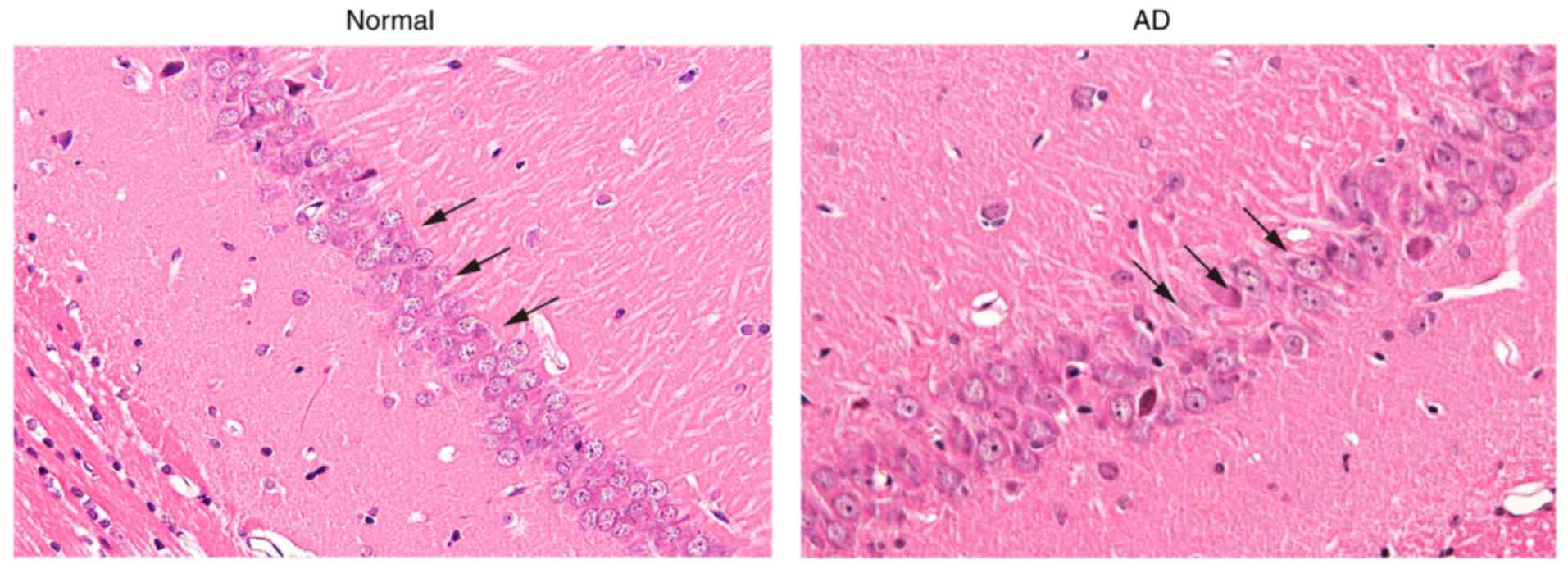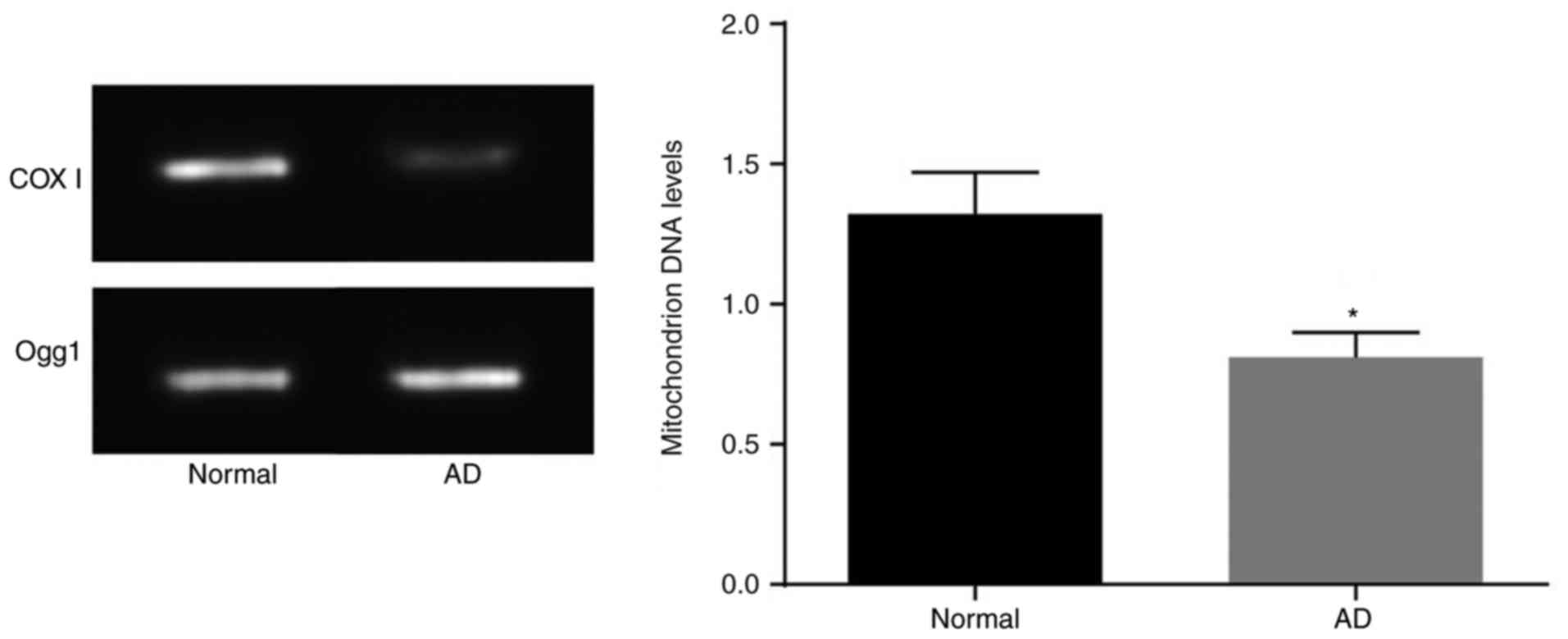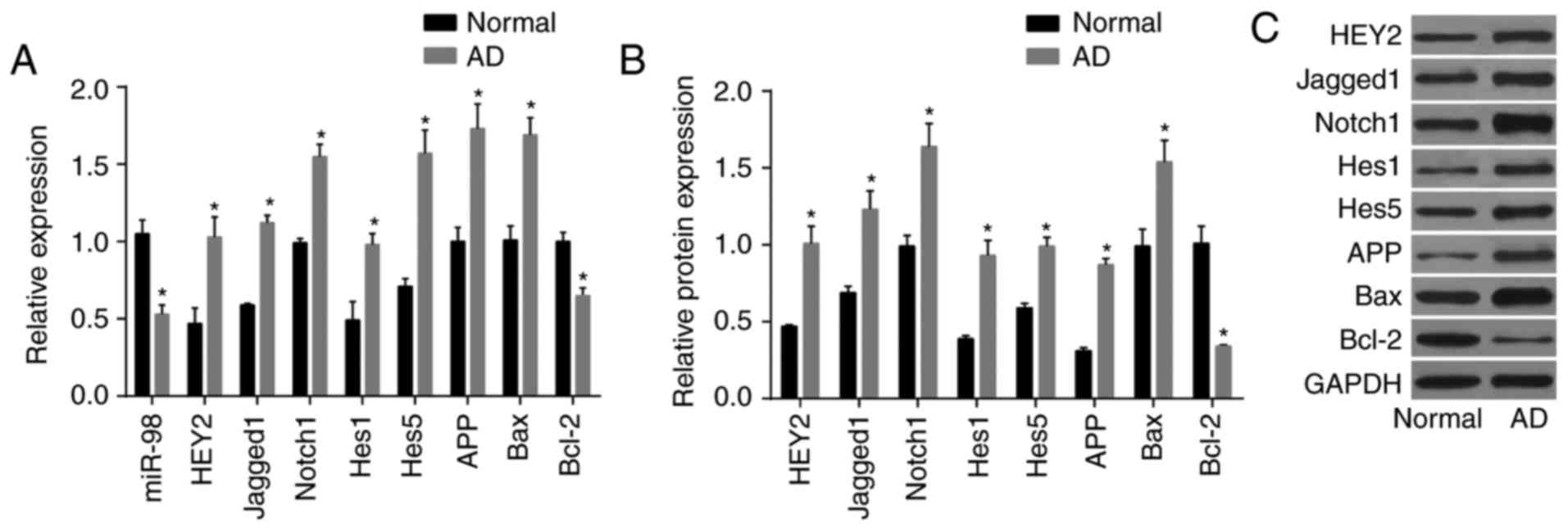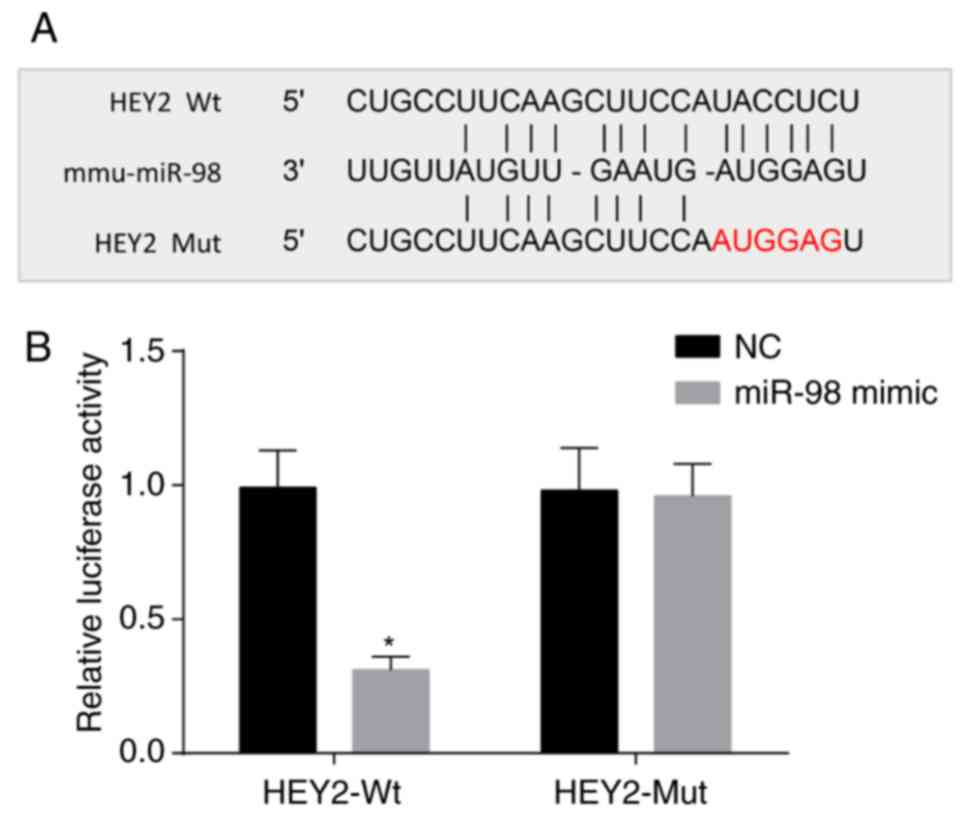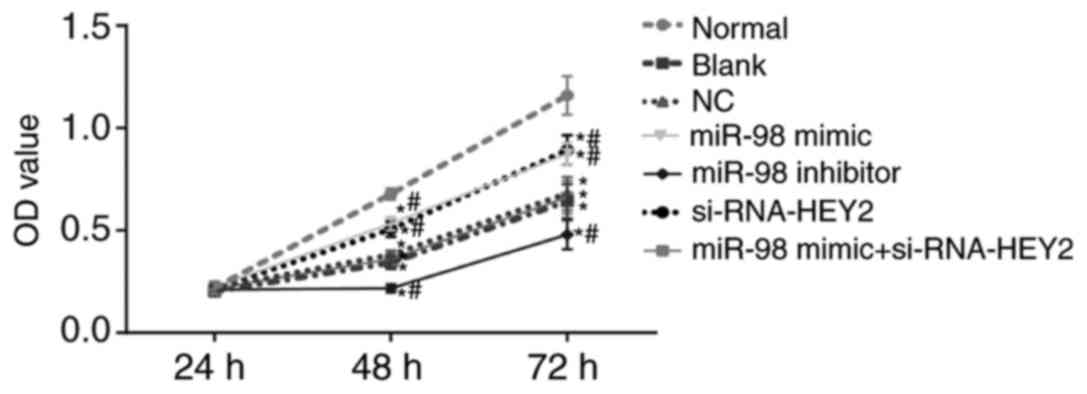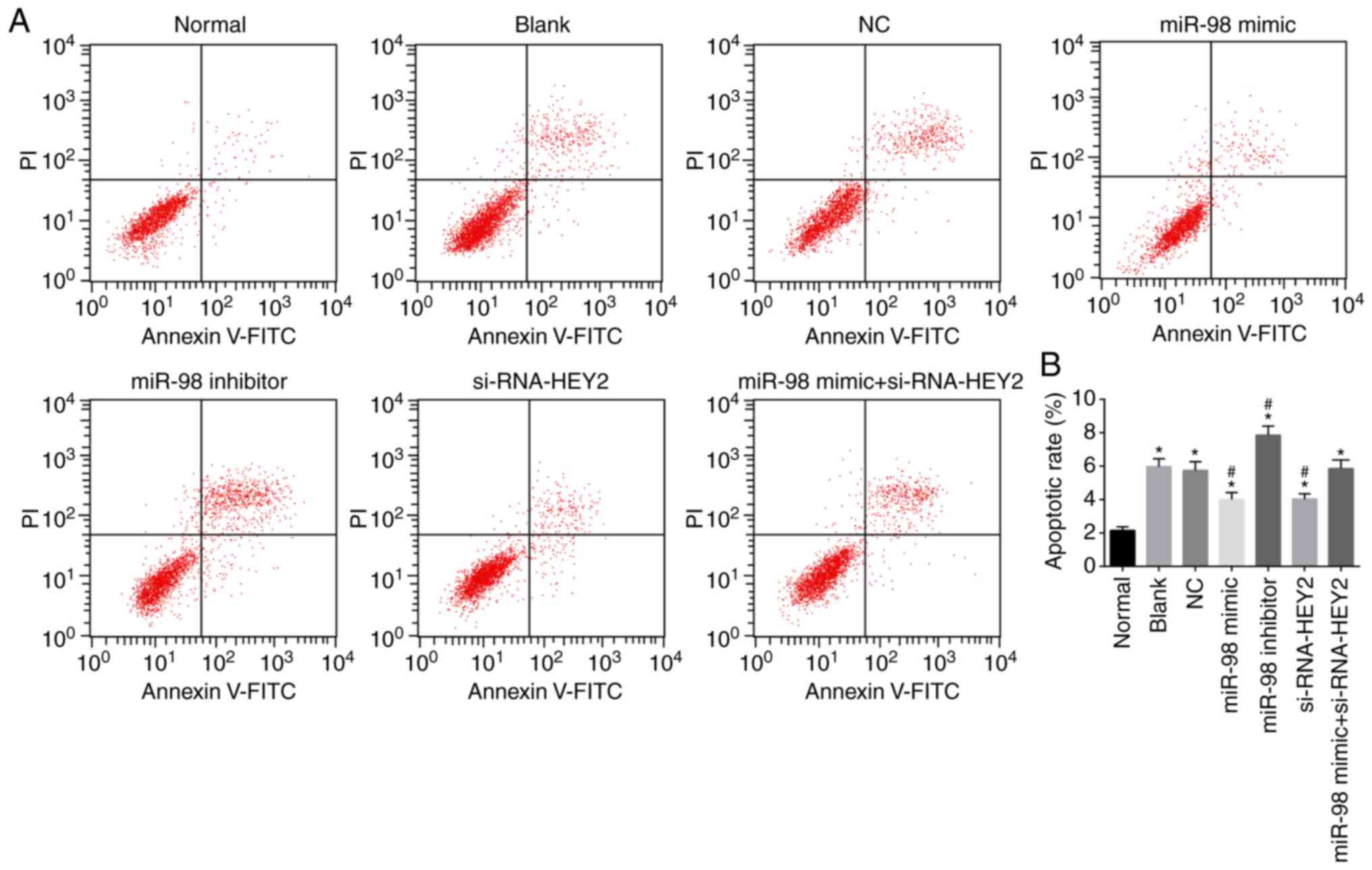|
1
|
Wenk GL: Neuropathologic changes in
Alzheimer’s disease. J Clin Psychiatry. 64(Suppl 9): S7–S10.
2003.
|
|
2
|
Scheltens P, Blennow K, Breteler MM, de
Strooper B, Frisoni GB, Salloway S and Van der Flier WM:
Alzheimer’s disease. Lancet. 388:505–517. 2016. View Article : Google Scholar : PubMed/NCBI
|
|
3
|
Luque-Contreras D, Carvajal K, Toral-Rios
D, Franco-Bocanegra D and Campos-Peña V: Oxidative stress and
metabolic syndrome: Cause or consequence of Alzheimer’s disease.
Oxid Med Cell Longev 2014. 497802:2014.
|
|
4
|
Chami L and Checler F: BACE1 is at the
crossroad of a toxic vicious cycle involving cellular stress and
β-amyloid production in Alzheimer’s disease. Mol Neurodegener.
7:522012. View Article : Google Scholar
|
|
5
|
Liggins C, Snyder HM, Silverberg N,
Petanceska S, Refolo LM, Ryan L and Carrillo MC: International
Alzheimer’s Disease Research Portfolio (IADRP) aims to capture
global Alzheimer’s disease research funding. Alzheimers Dement.
10:405–408. 2014. View Article : Google Scholar : PubMed/NCBI
|
|
6
|
Yang Q, Wang T, Su N, Liu Y, Xiao S and
Kapoula Z: Long latency and high variability in accuracy-speed of
prosaccades in Alzheimer’s disease at mild to moderate stage.
Dement Geriatr Cogn Dis Extra. 1:318–329. 2011. View Article : Google Scholar : PubMed/NCBI
|
|
7
|
Sagy-Bross C, Kasianov K, Solomonov Y,
Braiman A, Friedman A, Hadad N and Levy R: The role of cytosolic
phospholipase A2 α in amyloid precursor protein induction by
amyloid beta1-42: Implication for neurodegeneration. J Neurochem.
132:559–571. 2015. View Article : Google Scholar
|
|
8
|
Banote RK, Edling M, Eliassen F, Kettunen
P, Zetterberg H and Abramsson A: β-Amyloid precursor protein-b is
essential for Mauthner cell development in the zebrafish in a
Notch-dependent manner. Dev Biol. 413:26–38. 2016. View Article : Google Scholar : PubMed/NCBI
|
|
9
|
Chen Y, Huang X, Zhang YW, Rockenstein E,
Bu G, Golde TE, Masliah E and Xu H: Alzheimer’s β-secretase (BACE1)
regulates the cAMP/PKA/CREB pathway independently of β-amyloid. J
Neurosci. 32:11390–11395. 2012. View Article : Google Scholar : PubMed/NCBI
|
|
10
|
Lu JX, Qiang W, Yau WM, Schwieters CD,
Meredith SC and Tycko R: Molecular structure of β-amyloid fibrils
in Alzheimer’s disease brain tissue. Cell. 154:1257–1268. 2013.
View Article : Google Scholar : PubMed/NCBI
|
|
11
|
Bao XQ, Li N, Wang T, Kong XC, Tai WJ, Sun
H and Zhang D: FLZ alleviates the memory deficits in transgenic
mouse model of Alzheimer’s disease via decreasing beta-amyloid
production and tau hyperphosphorylation. PLoS One. 8:e780332013.
View Article : Google Scholar
|
|
12
|
Jiang Y, Zhou Z, Meng QT, Sun Q, Su W, Lei
S, Xia Z and Xia ZY: Ginsenoside Rb1 treatment attenuates pulmonary
inflammatory cytokine release and tissue injury following
intestinal ischemia reperfusion injury in mice. Oxid Med Cell
Longev. 2015.843721:2015.
|
|
13
|
Simonian NA and Coyle JT: Oxidative stress
in neurodegenerative diseases. Annu Rev Pharmacol Toxicol.
36:83–106. 1996. View Article : Google Scholar : PubMed/NCBI
|
|
14
|
Muhammad S, Bierhaus A and Schwaninger M:
Reactive oxygen species in diabetes-induced vascular damage,
stroke, and Alzheimer’s disease. J Alzheimers Dis. 16:775–785.
2009. View Article : Google Scholar
|
|
15
|
Shen GX: Mitochondrial dysfunction,
oxidative stress and diabetic cardiovascular disorders. Cardiovasc
Hematol Disord Drug Targets. 12:106–112. 2012. View Article : Google Scholar : PubMed/NCBI
|
|
16
|
Li X, Zhang M and Zhou H: The
morphological features and mitochondrial oxidative stress mechanism
of the retinal neurons apoptosis in early diabetic rats. J Diabetes
Res. 2014.678123:2014.
|
|
17
|
Weir HJ, Murray TK, Kehoe PG, Love S,
Verdin EM, O’Neill MJ, Lane JD and Balthasar N: CNS SIRT3
expression is altered by reactive oxygen species and in Alzheimer’s
disease. PLoS One. 7:e482252012. View Article : Google Scholar
|
|
18
|
Wang X, Wang W, Li L, Perry G, Lee HG and
Zhu X: Oxidative stress and mitochondrial dysfunction in
Alzheimer’s disease. Biochim Biophys Acta. 1842.1240–1247.
2014.
|
|
19
|
Brunst KJ, Sanchez Guerra M, Gennings C,
Hacker M, Jara C, Bosquet Enlow M, Wright RO, Baccarelli A and
Wright RJ: Maternal lifetime stress and prenatal psychological
functioning are associated with decreased placental mitochondrial
DNA copy number in the PRISM study. Am J Epidemiol. 186:1227–1236.
2017. View Article : Google Scholar : PubMed/NCBI
|
|
20
|
Hayashi Y, Haneji N, Hamano H and Yanagi
K: Transfer of Sjogren’s syndrome-like autoimmune lesions into SCID
mice and prevention of lesions by anti-CD4 and anti-T cell receptor
antibody treatment. Eur J Immunol. 24:2826–2831. 1994. View Article : Google Scholar : PubMed/NCBI
|
|
21
|
Wu DC, Zhang MF, Su SG, Fang HY, Wang XH,
He D, Xie YY and Liu XH: HEY2, a target of miR-137, indicates poor
outcomes and promotes cell proliferation and migration in
hepatocellular carcinoma. Oncotarget. 7:38052–38063.
2016.PubMed/NCBI
|
|
22
|
Morioka T, Sakabe M, Ioka T, Iguchi T,
Mizuta K, Hattammaru M, Sakai C, Itoh M, Sato GE, Hashimoto A, et
al: An important role of endothelial hairy-related transcription
factors in mouse vascular development. Genesis. 52:897–906. 2014.
View Article : Google Scholar : PubMed/NCBI
|
|
23
|
Vidigal JA and Ventura A: The biological
functions of miRNAs: Lessons from in vivo studies. Trends Cell
Biol. 25:137–147. 2015. View Article : Google Scholar :
|
|
24
|
Siragam V, Rutnam ZJ, Yang W, Fang L, Luo
L, Yang X, Li M, Deng Z, Qian J, Peng C and Yang BB: MicroRNA
miR-98 inhibits tumor angiogenesis and invasion by targeting
activin receptor-like kinase-4 and matrix metalloproteinase-11.
Oncotarget. 3:1370–1385. 2012. View Article : Google Scholar : PubMed/NCBI
|
|
25
|
Livak KJ and Schmittgen TD: Analysis of
relative gene expression data using real-time quantitative PCR and
the 2(−Delta Delta C(T)) method. Methods. 25:402–408. 2001.
View Article : Google Scholar
|
|
26
|
Cummings J, Lee G, Mortsdorf T, Ritter A
and Zhong K: Alzheimer’s disease drug development pipeline: 2017.
Alzheimers Dement (NY). 3:367–384. 2017.
|
|
27
|
Sevigny J, Chiao P, Bussière T, Weinreb
PH, Williams L, Maier M, Dunstan R, Salloway S, Chen T, Ling Y, et
al: Addendum: The antibody aducanumab reduces Aβ plaques in
Alzheimer’s disease. Nature. 546:5642017. View Article : Google Scholar
|
|
28
|
Kocahan S and Doğan Z: Mechanisms of
Alzheimer’s disease pathogenesis and prevention: The brain, neural
pathology, N-methyl-D-aspartate receptors, tau protein and other
risk factors. Clin Psychopharmacol Neurosci. 15:1–8. 2017.
View Article : Google Scholar : PubMed/NCBI
|
|
29
|
Saed GM, Diamond MP and Fletcher NM:
Updates of the role of oxidative stress in the pathogenesis of
ovarian cancer. Gynecol Oncol. 145:595–602. 2017. View Article : Google Scholar : PubMed/NCBI
|
|
30
|
Yang EJ, Ahn S, Ryu J, Choi MS, Choi S,
Chong YH, Hyun JW, Chang MJ and Kim HS: Phloroglucinol attenuates
the cognitive deficits of the 5XFAD mouse model of Alzheimer’s
disease. PLoS One. 10:e01356862015. View Article : Google Scholar
|
|
31
|
Moslemnezhad A, Mahjoub S and Moghadasi M:
Altered plasma marker of oxidative DNA damage and total antioxidant
capacity in patients with Alzheimer’s disease. Caspian J Intern
Med. 7:88–92. 2016.PubMed/NCBI
|
|
32
|
Malik AN and Czajka A: Is mitochondrial
DNA content a potential biomarker of mitochondrial dysfunction.
Mitochondrion. 13:481–492. 2013. View Article : Google Scholar
|
|
33
|
Banerjee A and Luettich K: MicroRNAs as
potential biomarkers of smoking-related diseases. Biomark Med.
6:671–684. 2012. View Article : Google Scholar : PubMed/NCBI
|
|
34
|
Panda H, Chuang TD, Luo X and Chegini N:
Endometrial miR-181a and miR-98 expression is altered during
transition from normal into cancerous state and target PGR, PGRMC1,
CYP19A1, DDX3X, and TIMP3. J Clin Endocrinol Metab. 97:E1316–E1326.
2012. View Article : Google Scholar : PubMed/NCBI
|
|
35
|
Tan L, Yu JT, Tan MS, Liu QY, Wang HF,
Zhang W, Jiang T and Tan L: Genome-wide serum microRNA expression
profiling identifies serum biomarkers for Alzheimer’s disease. J
Alzheimers Dis. 40:1017–1027. 2014. View Article : Google Scholar
|
|
36
|
Li Q, Li X, Wang L, Zhang Y and Chen L:
miR-98-5p acts as a target for Alzheimer’s disease by regulating Aβ
production through modulating SNX6 expression. J Mol Neurosci.
60:413–420. 2016. View Article : Google Scholar : PubMed/NCBI
|
|
37
|
Hu YK, Wang X, Li L, Du YH, Ye HT and Li
CY: MicroRNA-98 induces an Alzheimer’s disease-like disturbance by
targeting insulin-like growth factor 1. Neurosci Bull. 29:745–751.
2013. View Article : Google Scholar : PubMed/NCBI
|
|
38
|
Liu QY, Chang MN, Lei JX, Koukiekolo R,
Smith B, Zhang D and Ghribi O: Identification of microRNAs involved
in Alzheimer’s progression using a rabbit model of the disease. Am
J Neurodegener Dis. 3:33–44. 2014.
|
|
39
|
Marathe S, Jaquet M, Annoni JM and Alberi
L: Jagged1 is altered in Alzheimer’s disease and regulates spatial
memory processing. Front Cell Neurosci. 11:2202017. View Article : Google Scholar
|
|
40
|
Brai E, Alina Raio N and Alberi L: Notch1
hallmarks fibrillary depositions in sporadic Alzheimer’s disease.
Acta Neuropathol Commun. 4:642016. View Article : Google Scholar
|
|
41
|
Kageyama R, Shimojo H and Imayoshi I:
Dynamic expression and roles of Hes factors in neural development.
Cell Tissue Res. 359:125–133. 2015. View Article : Google Scholar
|
|
42
|
Dawkins E and Small DH: Insights into the
physiological function of the β-amyloid precursor protein: Beyond
Alzheimer’s disease. J Neurochem. 129:756–769. 2014. View Article : Google Scholar : PubMed/NCBI
|
|
43
|
MacGibbon GA, Lawlor PA, Sirimanne ES,
Walton MR, Connor B, Young D, Williams C, Gluckman P, Faull RL,
Hughes P and Dragunow M: Bax expression in mammalian neurons
undergoing apoptosis, and in Alzheimer’s disease hippo-campus.
Brain Res. 750:223–234. 1997. View Article : Google Scholar : PubMed/NCBI
|
|
44
|
Burghardt NS, Park EH, Hen R and Fenton
AA: Adult-born hippocampal neurons promote cognitive flexibility in
mice. Hippocampus. 22:1795–1808. 2012. View Article : Google Scholar : PubMed/NCBI
|
|
45
|
Wang J, Chen L, Jin S, Lin J, Zheng H,
Zhang H, Fan H, He F, Ma S and Li Q: Altered expression of
microRNA-98 in IL-1β-induced cartilage degradation and its role in
chondrocyte apoptosis. Mol Med Rep. 16:3208–3216. 2017. View Article : Google Scholar : PubMed/NCBI
|
|
46
|
Lannfelt L, Relkin NR and Siemers ER:
Amyloid-β-directed immunotherapy for Alzheimer’s disease. J Intern
Med. 275:284–295. 2014. View Article : Google Scholar : PubMed/NCBI
|



